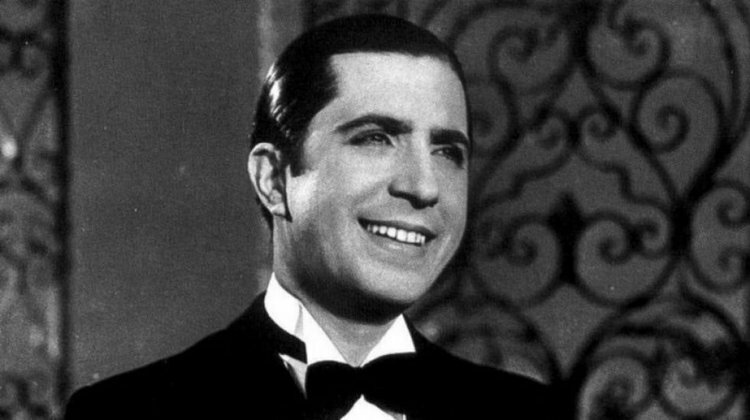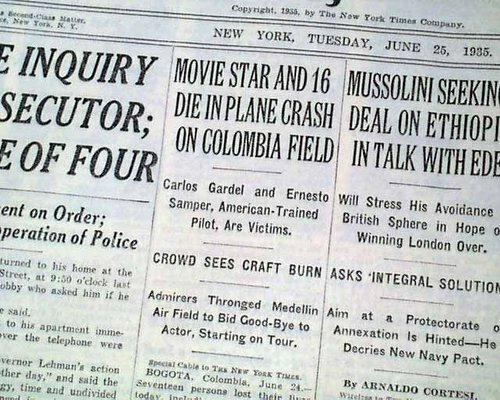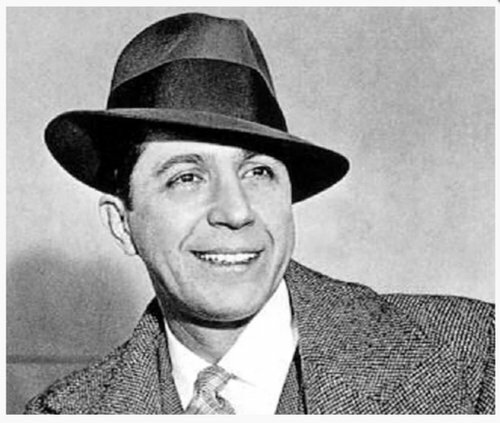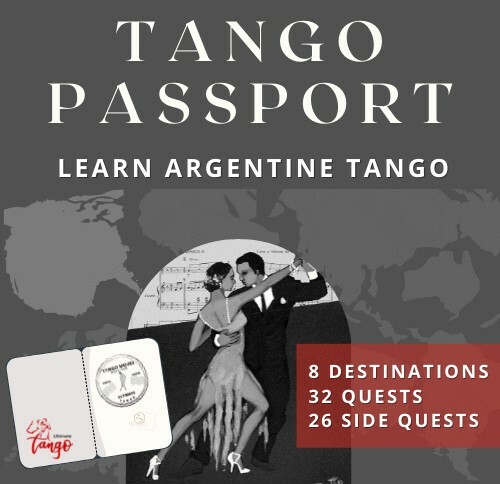Carlos Gardel is perhaps one of the most famous and revered tango icons in history.
It can even be said that his name is synonymous with tango and the dance would not be what it is today if not for his contributions.

While Gardel himself is a tango dancer, he is more widely known for his tango songs, which allowed not only this genre of music but also the dance to flourish outside of Buenos Aires.
Thanks to Gardel’s compositions and the movies he made featuring tango music, audiences even from as far as the West were enamored by the tango phenomenon. Today, tango has a captured audience from all around the world.
While Carlos Gardel is celebrated for his music, however, why is it that one will rarely hear his songs being played and danced to in milongas?
Respect and Reverence
Traditionally,
there is one Gardel song that does get played in milongas — his performance of the “La Cumparsita.”
Originally composed by Gerardo “Becho” Matos Rodríguez,
“La Cumparsita” is usually played as a farewell song that signals the end of the final tanda for the night.
It is difficult to trace the exact origin of this practice as Argentine tango itself is made up of somewhat arbitrary codigos and rules passed only through word-of-mouth.
Strictly speaking, however, Gardel did not perform Matos Rodríguez’s “La Cumparsita.”
According to an article by Revista Panorama,
“Gardel sang a version of ‘La Cumparsita,’ not authorized by Matos Rodríguez, under the title ‘Si supieras’ (If You Knew), his most famous lyrics.
He promised to record a version with lyrics written by ‘Becho,’ but died before fulfilling the promise.”
Nevertheless,
Gardel’s version of the “La Cumparsita” might be the only song he performed that would be played in a milonga.
The rest of his performances and compositions, however, are unlikely to make an appearance on the dance floor, unless the DJ is courting scandal and outrage from the dancers.
Enthusiasts of Hollywood movies will perhaps find this unspoken “prohibition” strange. Many will be quick to point out that a particular Gardel song is a favorite in numerous movies: “Por Una Cabeza.”
“Por Una Cabeza,” which Gardel himself sang in the 1935 movie The Tango Bar, has been featured in prominent modern films such as Scent of a Woman, Schindler’s List, True Lies, Frida, Easy Virtue, and many others.
In fact, “Por Una Cabeza” has even become a popular choice among couples looking for a wedding dance song.
Funnily enough,
“Por Una Cabeza,” which roughly translates to the horse racing term “to lose by a head,” tells the story of a man bemoaning his “addiction” to women and losing them as he would lose money in a horse race.
That said, why isn’t “Por Una Cabeza” being played in milongas when it’s even popularized by Hollywood?
Gardel’s status as a revered icon of tango far exceeds whatever popularity his songs may have gained through any Hollywood media.
Carlos Gardel is held in such high esteem that to simply dance to his songs in a milonga would feel like an insult to tango and Argentine culture itself.
Many believe that not even the best dancers could do justice to Gardel’s songs, and to even make an attempt in a milonga, competition, or any public event would be the height of hubris.
Irene and Man Yung’s Tango Blog explains this best:
“For Man Yung,
the way that Gardel sings makes all the art and artifice of singing disappear. Gardel is not singing, but speaking right to your heart as if he was a beloved friend.
It is his voice that takes you right into tango — or is it, as [Alfonso Laso] Bermeo had said, ‘Gardel is Tango’?”
"It's a dangerous thing. As I dance this, I am glad that I don't understand Spanish and that I am not Argentinian.”
“My ignorance of the language and the culture insulates me from the core of Gardel's music — it is an intense fire that would consume me if I put my heart and soul into the dance. If I understood the lyrics, if I was born in the culture, if I was completely naked and exposed to the full effect of the music, I wouldn't be able to dance to it — any attempt would make me break down into tears."

Superstition Surrounding Gardel
Such reverence for Gardel is highly attributed to his talent for singing, but the mystique that also surrounds his personality may have a lot to do with his untimely death.
On June 24, 1935, only three months after recording what is believed to be his final song, “Volver,” Gardel died in a plane crash in Medellin, Colombia.
He was only 44 years old.
Over the years, superstition — or “yeta” — formed around Gardel’s songs, most notably “Adios Muchachos.”
Many people mistakenly believe that this was the last song Gardel played before his untimely death, though there is no evidence to support this. Nevertheless, tango DJs will expressly avoid playing this song out of respect and the belief that something unfortunate might happen.
It is interesting to note that there are numerous anecdotes floating around tango forums regarding “accidents” that happened after “Adios Muchachos” was played.
For the lack of a better term, some can be regarded as quite “normal” incidents wherein touring dancers might experience a torn dress or something breaking on stage. But perhaps the strangest of all the superstitions involving “Adios Muchachos” is the one cited in La Sastresa, which the author of the blog took from an email correspondence:
“‘Picture this:
I am reading about AM [Adios Muchachos] and now while I type, I am using only one hand, because the other one is holding on to my crotch.
It seems that Carlos Gardel's last song before the fatal flight that took his life was the one you mention. Since then, singers regularly refuse to sing it in public, because it is bad luck.
They even go to the extent of grabbing their crotch while the tango is played, as a way to recall the painful experience of Gardel and his travel companions burning like charcoal on the tarmac of Medellin airport.
Polo played AM once too many last year and two weeks later, Chez Louis shut down after 40 years in business, and was levelled by the construction of a drugstore in the place it used to stand. I played AM one night in 1991 on KIQI in San Francisco, forgetting the ritual of holding on to my jewels. Two weeks later, the show was cancelled and went off the air. Go figure! Our friend Nora D. adds that the women's version to keep the yeta away is to grab their left breast.’ Date: Tue, 13 Feb 1996 — Alberto”
Of course, there are numerous other songs that Gardel sang that are less mired in superstition compared to “Adios Muchachos.” So, why aren’t milongas playing those instead?
Made for Listening, Not Dancing
In terms of musicality,
many tango dancers and DJs are in agreement that most of Gardel’s songs are actually difficult to dance to.
A member of Dance Forums participating in a related conversation explains this best:
“While Carlos Gardel is an icon — he is to Argentine people what Elvis is to Americans — his music was made for listening, not necessarily dancing.
“Gardel is very famous and thus his recordings are widely available. You can find them in any record store and, because of this, many people think that they are popular for dancing. Actually, in my experience,
Gardel is rarely, if ever, played in the milongas I have been to in America or in Argentina.
In fact, he died tragically young in a plane crash in 1935 before the Golden Age of tango dancing in Argentina even happened. The Golden Age was from the late 1930s through the 1950s. This is when the bulk of recordings suited for dancing were made. The big orchestras were namely those of Juan D'Arienzo, Carlos Di Sarli, Osvaldo Pugliese, Anibal Troilo, Miguel Calo, Francisco Canaro, Angel D'Agostino, Alfredo De Angelis, Pedro Laurenz, and Ricardo Tanturi. The songs of these orchestras had strong, clear, steady yet complex dance rhythms. You do not find this in most of Gardel's music.”
Further to musicality,
any competent tango DJ is expected to play easy, comfortable, and familiar songs in milongas or any public tango event.
This is because the goal of any tango DJ is to keep people dancing all night even after they’ve already enjoyed several tandas.
Since Gardel’s songs aren’t normally played in milongas to begin with, dancers will likely hesitate to dance to a Gardel song should a tango DJ even hazard to put it on the speakers
Instead of simply enjoying the experience, those who might actually attempt to dance to a Gardel song would be more preoccupied trying to follow the rhythm of the music. Because most venues for milongas have limited space, accidents can happen, further reinforcing the superstition that Gardel is simply not to be played for dancing.
At the same time, people in the milonga might think that a tango DJ is merely showing off if they even try to include a Gardel performance that isn’t “La Cumparsita.
This is considered bad manners in tango etiquette.
Since Gardel is remembered in death as well as in life, many people also tend to associate Gardel’s songs with the plane crash.
This can be rather off-putting for some tango dancers that they might even leave a milonga should someone make the mistake of including a Gardel song in a regular tanda.

Gardel the Genius
Unlike many of the orchestra compositions,
Gardel’s hauntingly beautiful music is meant to be savored in stillness, almost as though it is a vehicle for meditation and sheer musical appreciation.
Of course, some will still likely avoid the yeta of “Adios Muchachos,” but all other songs by Gardel are best enjoyed while one is sitting down so as to ride through the wave of its emotions that have stood the test of time. Even those who may not be familiar with the language can understand the profundity in Gardel’s songs, which can transport them back to an era when heartbreak, exile, homesickness, romance, and other such themes comprised the meaning of life for most porteños.
An email correspondence posted as a comment from My Tango Diaries puts it best:
"In my mind [Gardel] is of extreme importance to the history of tango because without him, tango as we know it would not exist, or would be very different.
Gardel was not a dancer, he was a singer (and eventually an actor), one of the first who performed tango music with words that one could say in polite society. But as your documentation points out, they weren't just words — they often conveyed the deepest feelings of the impoverished and struggling men and women in the barrios of Buenos Aires and elsewhere — he sang about life as he knew it, personally, or from those around him.”

Photo from https://www.thefamouspeople.com/profiles/carlos-gardel-7217.php
"He was also a reasonably good actor and had a beautiful tenor voice. He also composed a lot of his own music. His greatest achievement was introducing tango (music) to the world, particularly in New York and Paris, and in movies which he made in those cities, and which captured the imagination of the western world (maybe the fact that we were in the Great Depression had something to do with it?). When he died in 1935 in the city of Medellin, Colombia, he had made at least 5 movies and was as popular as Rudolf Valentino had been a generation earlier. Others refined and promoted tango as dance, but without Carlos Gardel, it is doubtful that they would have found the audience they did."
Without Gardel’s talent and genius, tango as we know it might not have flourished as it went on to.
It doesn’t matter if you are entirely new to dancing… or have been dancing your whole life. We distill everything you need to know to be able to hit the milonga into simple, easy-to-understand steps. Regardless of your level, this course has something for everyone!
At the end of Tango Passport, you’ll be able to improvise and dance the tango…. anywhere in the world. More details HERE.

